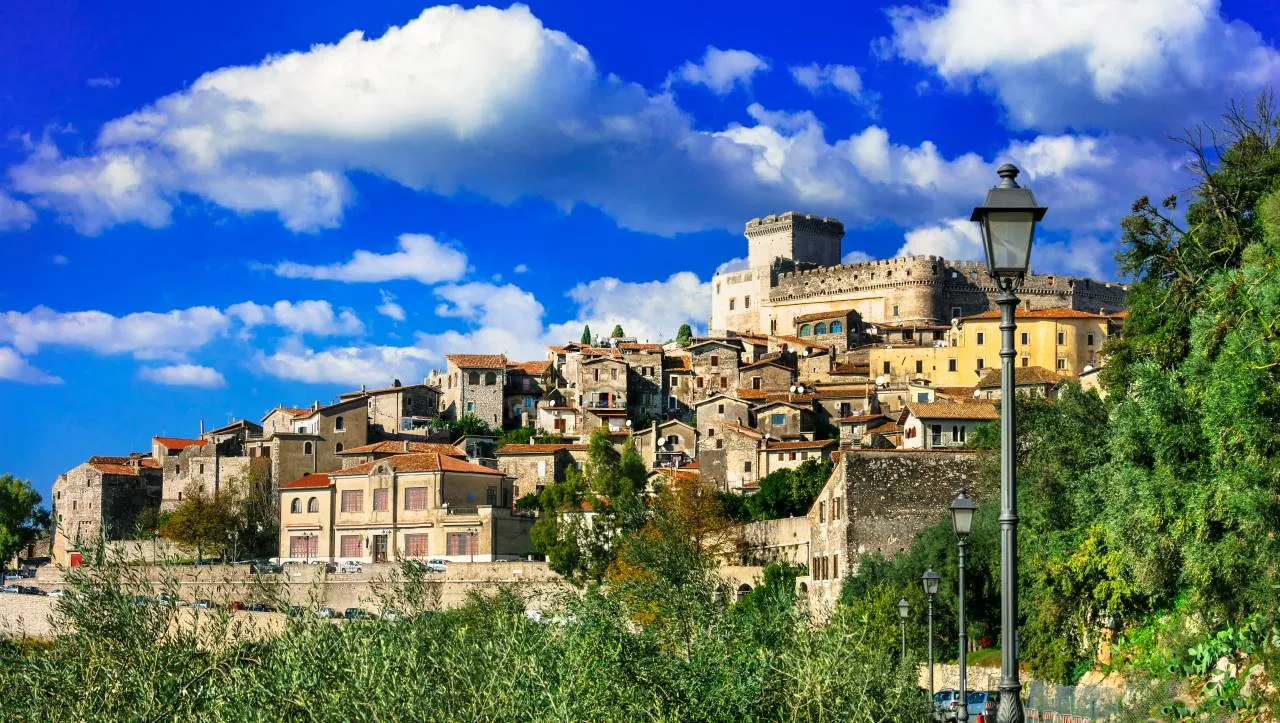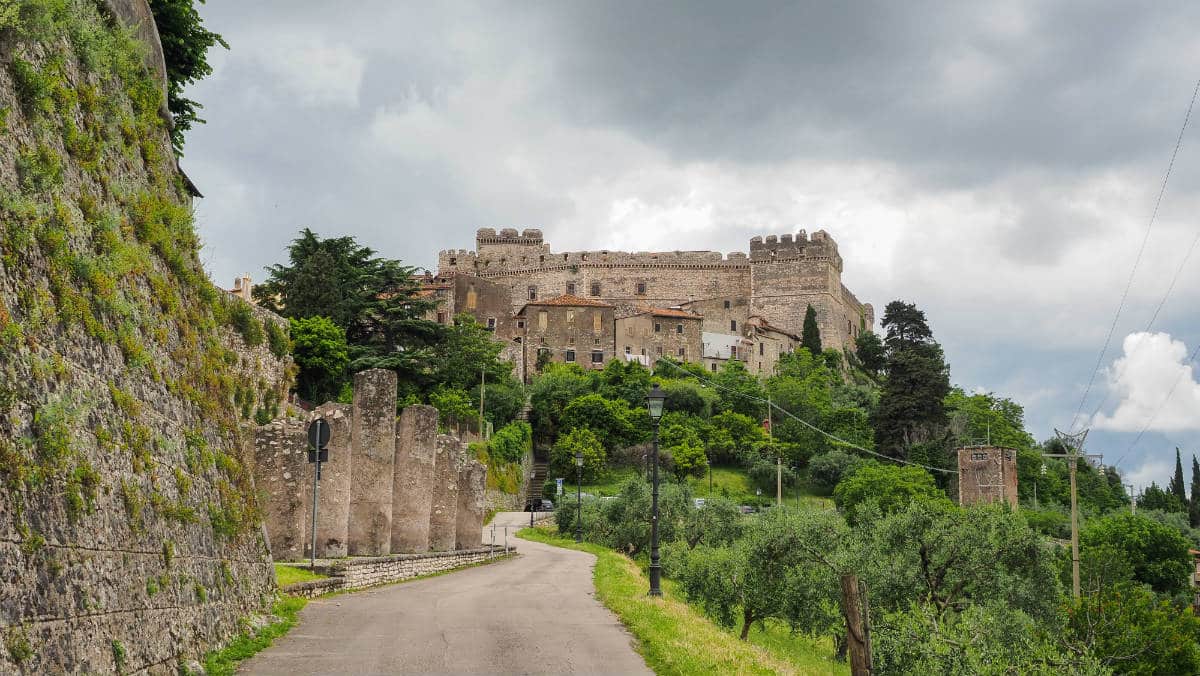The Caetani Castle is a thirteenth century castle, provided with male and ramparts, built according to the wishes of the family of the Annibaldi, at the beginning of the thirteenth century. The manor was born as military fortress, in a strategic point of the territory between Rome and Naples, that as a noble residence: the external walls are thick over three meters and the whole structure is protected by walls that rests on the living rock. This first construction remain only the male and a controtorre said “plunger”.
The family Annibaldi ceded in 1297 the territories of Sermoneta, Bassiano and San Donato to the nephew of Pope Boniface VIII, Pietro Caetani. The Caetani risparmiarono not anything to make the Annibaldi fortress a real military fortress, with new buildings and five circles of walls, which, thanks to a system of drawbridges, ensured the possibility of isolating the tower in the event of attack. Under Onorato Caetani III, in the middle of the XVI century, Sermoneta knew the moment of greatest splendour: Honored was a man active, energetic, a real NATO commander, as demonstrated by participating in the battle of Lepanto.
The castle, which hosted among others Federico II and in 1536 Charles V, hosted long Lucrezia Borgia who dwelt in Sermoneta for some periods under the pontificate of Pope Alexander VI Borgia. Other guests they dwelled in the Castle Caetani, as popes Gregory XIII (1576) and Sixtus V, and other distinguished: of them there are traces in a room of the complex that hosted the inscriptions (still preserved on a wall) of all visitors to a certain level.
The fortress was attacked many times in the course of the centuries. In 1798 the castle was sacked by the troops of Napoleon who transformed it into a prison and ne asportarono 36 guns. The castle returned again to the Caetani toward the end of the nineteenth century, with Gelasio Caetani, which are due to the extensive restoration works of the ancient family residence. In the second world war, during Anzio landing of 1944, the castle was still inhabited by the Caetani (Roffredo and Marguerite Caetani) and by their settlers who fled from the lowland pontina.
Near the male rises the second tower, much smaller, said plunger. Outside of the two towers is the great Piazza d’Armi. Some buildings of the castle were partly demolished by the Caetani, who realized the Sala dei Baroni (amended by the Borgia in XV century) and the salt said chambers pints (renovated at the end of the nineties). The latter complex is composed of three rooms for guests, two of which were frescoed by an unknown author that is traced back to school of Pinturicchio with images representing mythological figures and the theological virtues. In 1400 was built the house of Cardinal Valentino Borgia: This building houses the Madonna and Child with Saints Peter, Stefano and Giovannino painted in 1541 by Girolamo Siciolante and that originally was exposed in the abbey of Valvisciolo.
The story goes that in aleggi fortress still today the spirit of a child who died violently in the basement of the castle, some people think that it is the small prince portrait in a framework present in the hall of the Cardinal and for which you do not know the identity.
The castle can be visited all year round and is open the whole week except on Thursday. From October to March the visits are from 14 to 16 while from April to September the first visit is to 22 and the last at 14.



